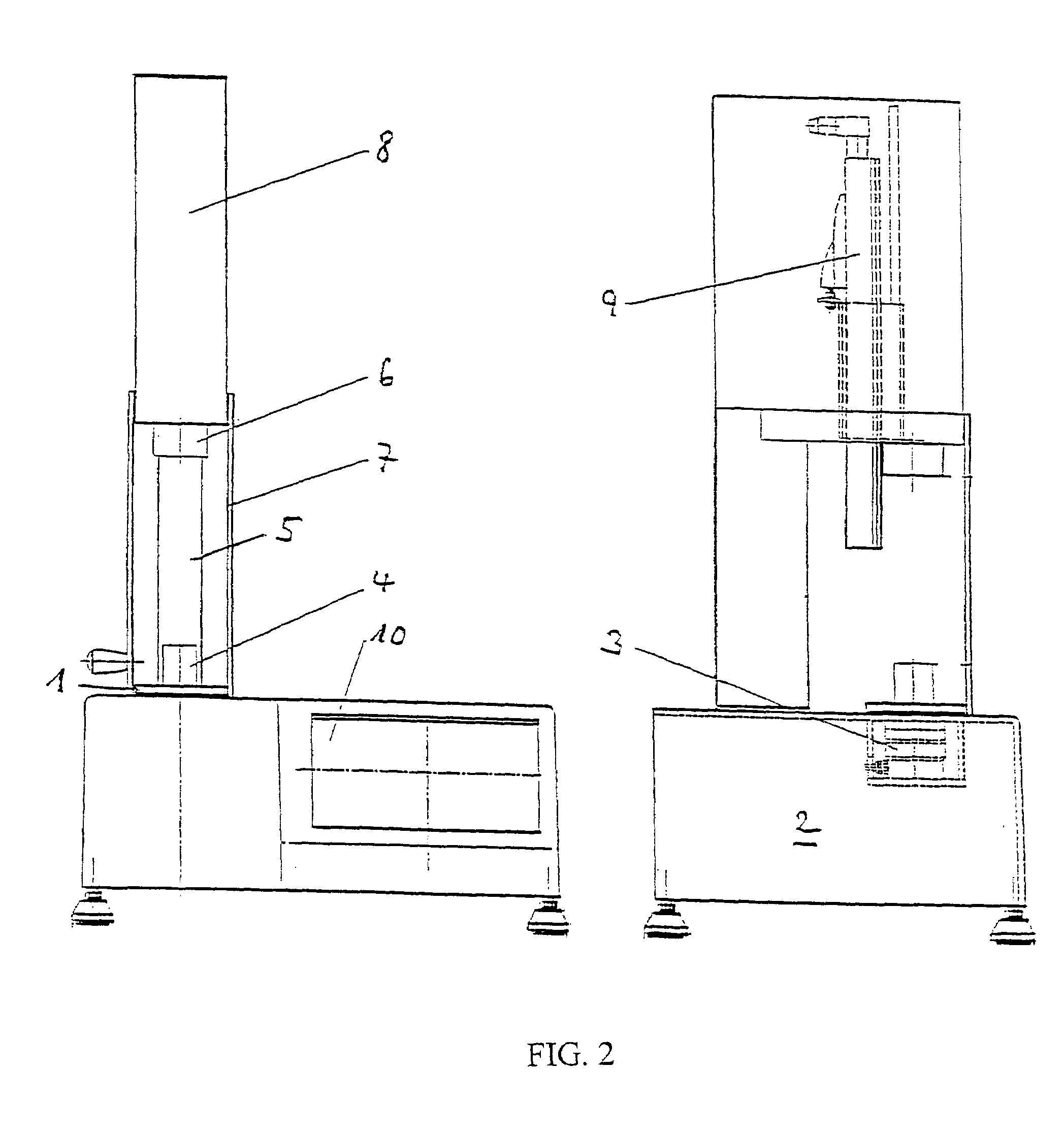Method and device for measuring plasticity of materials such as ceramic raw materials and masses
- Summary
- Abstract
- Description
- Claims
- Application Information
AI Technical Summary
Benefits of technology
Problems solved by technology
Method used
Image
Examples
Embodiment Construction
[0039]FIG. 1 shows a typical progression of measurement values, for one thing that of the path measurement, and for another that of the force measurement.
In this diagram, the symbols mean:
[0040]tD deformation time (ms)[0041]Fp peak / force signal (N)[0042]s deformation (mm)[0043]We elastic deformation energy (Nmm)[0044]Wp plastic deformation energy (Nmm)[0045]m1 increase in force (elastic)(N / ms)[0046]m2 increase in force (plastic)(N / ms)[0047]m3 drop in force signal (N / ms)
[0048]As is evident from this diagram, an initial deformation has a high speed and then makes a transition into a deformation having a lower speed, and finally ends at a final deformation (horizontal region).
[0049]The force measurement shows, initially, as a function of the yield value of the sample, a more or less great increase in force, which causes the elastic deformation. The force signal progression makes a transition into a more or less wave-shaped increase with a slight incline after an approximately linear in...
PUM
 Login to View More
Login to View More Abstract
Description
Claims
Application Information
 Login to View More
Login to View More - R&D
- Intellectual Property
- Life Sciences
- Materials
- Tech Scout
- Unparalleled Data Quality
- Higher Quality Content
- 60% Fewer Hallucinations
Browse by: Latest US Patents, China's latest patents, Technical Efficacy Thesaurus, Application Domain, Technology Topic, Popular Technical Reports.
© 2025 PatSnap. All rights reserved.Legal|Privacy policy|Modern Slavery Act Transparency Statement|Sitemap|About US| Contact US: help@patsnap.com



